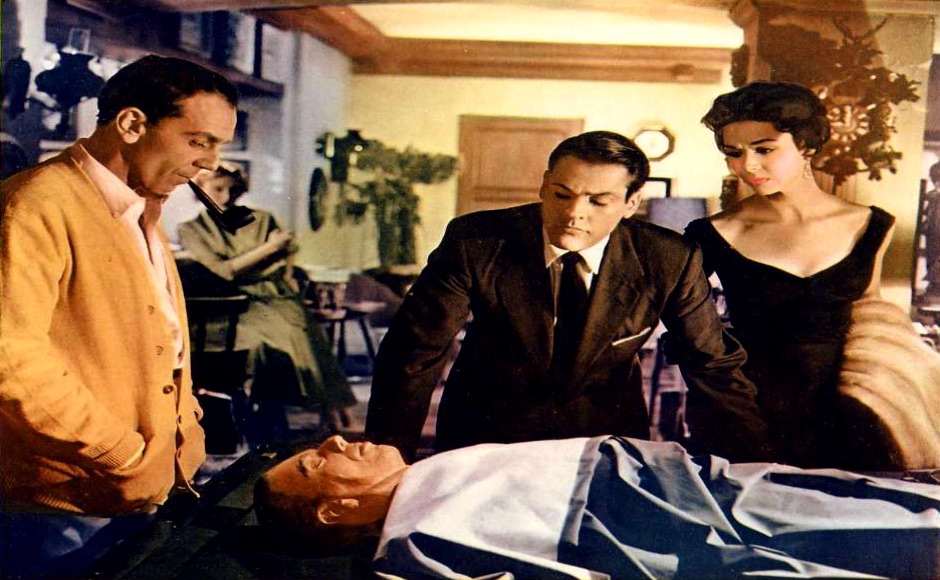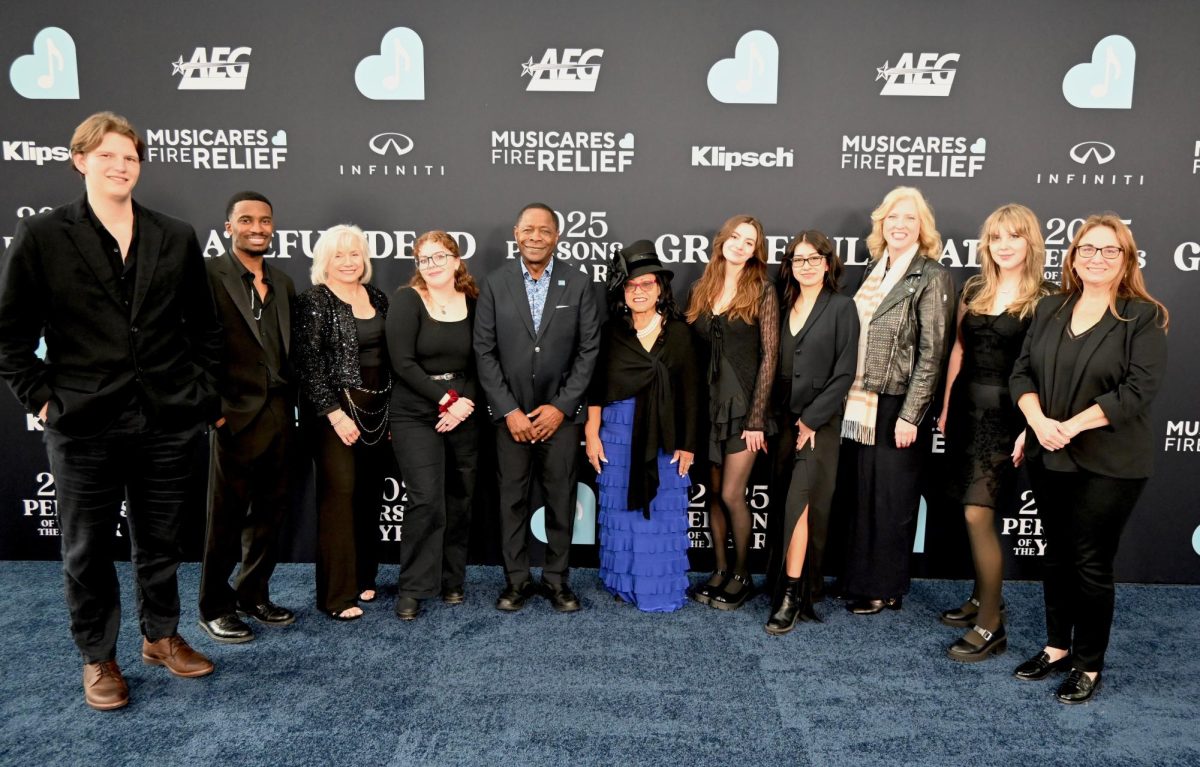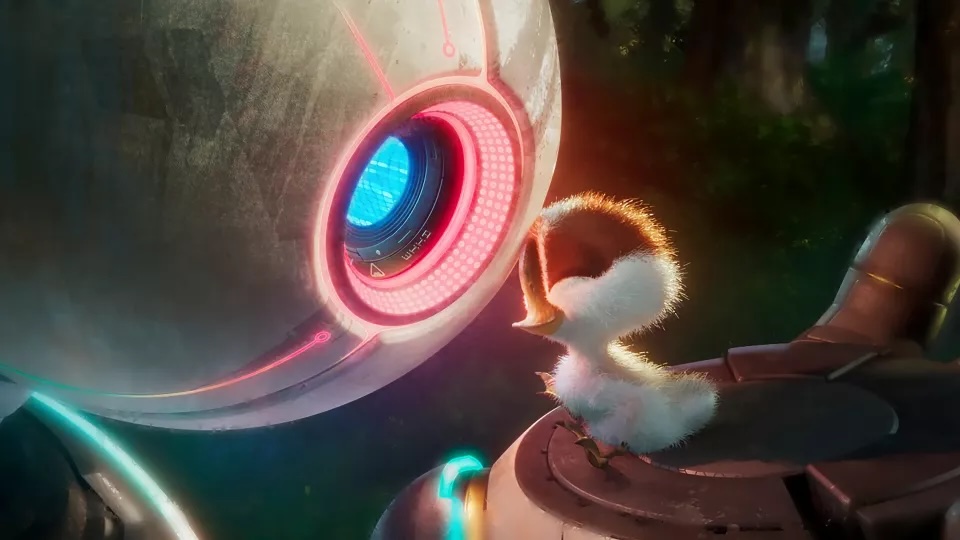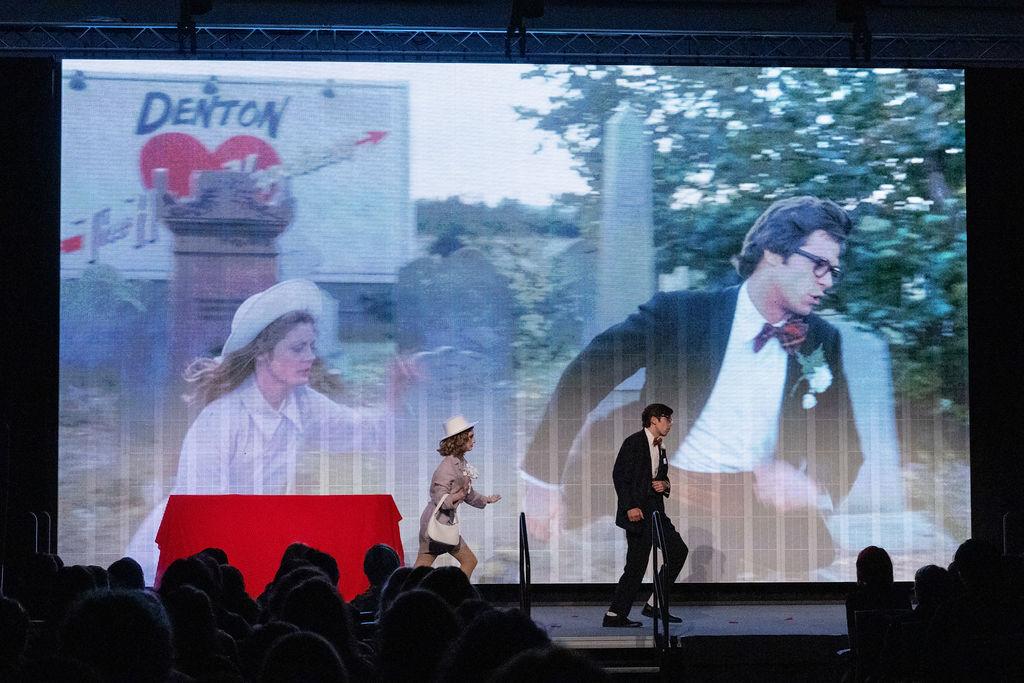Photo courtesy of Wikimedia Commons
Story by Brandon Black / Contributing Writer
Hello there, friends. During the month of October, I will be writing a film column every week that focuses on early horror and the beginnings and development of clichés, makeup and types of horror. We’re going to be covering movies from 1920 to 1958, and I’ve divided each week into a different category of exploration. They are also in chronological order, apart from two that I moved around to fit each theme. I hope you guys have a blast reading, and I’m looking forward to learning more about a genre I have very little experience in. Hopefully, readers will be able to garner more of an interest in old horror. Ladies and gentlemen, welcome to our fourth and final week.
This week’s theme is sci-fi/horror, and by now, so many clichés have been introduced that they’re going to start to take a backseat here, as a number of them have been used a few times by now. The early days of the genre lean into the scariest aspects of sci-fi to achieve their fear factors, so special effects are more important than ever and will be a large point of focus. The films of the week are “Creature From the Black Lagoon”(1954), “Them!” (1954), “Invasion of the Body Snatchers” (1956) and “The Fly” (1958). We’re reaching the end of the beginning of horror, and that just so happens to include giant ants and a man who is part fly.
“Creature From the Black Lagoon” (1954)
“Creature From the Black Lagoon” features the last of Universal’s classic horror monsters, the Gillman, and it only makes sense that he would usher in our week of sci-fi/horror. Of the films we’re covering this week, this is the only one that barely passes the science-fiction genre test, as it could very easily be lumped in with the already established monsters and their respective movies. What differentiates “Creature From the Black Lagoon,” however, is its innate B-movie qualities and a story with a surprisingly strict focus about a potentially alien being.
While the earlier features may have been slow according to our modern attention spans, they attempted to tackle a social issue or illuminate new ideas within the minds of moviegoers. For audiences back then, these were movies that left them thinking. In contrast, “Creature From the Black Lagoon” is a straightforward monster bloodbath, as a hapless group of stranded scientists faces off against an unknown creature from the depths below.
The first thing that struck me as I watched the film, besides the fruit fly that collided with my face (our house has a fruit fly issue at the moment), was how strikingly similar parts of this movie are to “Jaws.” There’s a lengthy scene where an underwater camera follows a woman swimming away from her boat alone as the Gillman stalks her. For much of the first half, the movie takes another cue from “Jaws” (or “Jaws” took a cue from “Creature”) by not revealing too much of the title monster. Once he’s actually revealed, the Gillman can’t help but look a tad ridiculous, even if his costume is an utter marvel of prosthetics. Honestly, it’s just the face that looks odd. Any time the movie simply shows its antagonist’s hand or legs, it’s legitimately tense and spooky. This was the first movie on the list to actually creep me out, and it was much appreciated.
The science-fiction element comes from the fact that the creature himself isn’t supernatural like the other monsters in the Universal series of films. He’s described as an alien of the waters as opposed to space by one of the scientists on board, because if aliens can potentially exist in the outskirts of the universe, why couldn’t they exist in a place where life is already present? And considering the people trailing the Gillman are a group of scientists originally on the hunt for fossils, “Creature From the Black Lagoon” just barely makes it into the realm of sci-fi, but it does nonetheless.
With its sci-fi nature, the movie also brings along its own clichés. The first is that it’s a pretty straightforward creature feature and is a huge inspiration for not only movies like “Jaws,” but other ‘80s and ‘90s B-movies like “Piranha” and “Anaconda.” A creature feature is just a movie that centers on some sort of animal (or creature, if you will) slowly taking out a group of people and has earned its own niche within the horror genre. “The Shallows” with Blake Lively is a good recent example. One of those cheap scares we see in movies all the time now makes an appearance too. You know those moments where a character feels a hand on their shoulder, and the movie makes a loud noise to jolt you? This movie has one of those, in addition to another jump scare that got me just a little bit.
So “Creature From the Black Lagoon” doesn’t have as much on its mind as “Bride of Frankenstein” or “Freaks,” but it relishes in the smaller scale pleasures of impressive prosthetics, actual onscreen blood and a good old-fashioned story of a monster and his victims. As a bonus, it seems like these movies are actually starting to get creepy, which is pretty awesome.
“Them!” (1954)
I told my grandparents that I would be writing this column not too long ago, and when I mentioned “Them!,” my grandma’s face lit up. She told me that when she was a kid, she and her sister watched the movie on TV late at night when they were supposed to be sound asleep. For that night and a few after, she said they both had to walk down the hallway to their room right next to each other with the lights on because of how badly the movie scared them. After giving it a watch, I can confirm that, although it still doesn’t reach the level of modern horror, “Them!” finally brings some legitimate scares to the horror genre.
The first scene of the film is tense, ominous and sets the stage perfectly for what’s to come. Two cops find a girl wandering the desert who remains completely silent, with a stunned expression on her face the entire time. They eventually discover her home, which has been totally ransacked, with one of the walls torn off. They continue exploring and come upon a small market that’s been destroyed in almost the exact same way, and both disaster sites have one thing in common (besides being destroyed, obviously): Sugar is spilled all over the floor. I promise it’s scarier than any way I could describe it.
So the enemy is a nest of gigantic ants, which have established colonies throughout the desert. Boy golly, these things look absolutely disgusting. The whole time I sat on the couch, I couldn’t stop thinking I’d felt some small critter or insect on my foot or hand. That’s perhaps what “Them!” does most effectively. It utilizes the innate human instinct to pull your hand away when a bug gets near you to elicit a strong reaction. The production department did a phenomenal job of making these bugs into genuinely threatening beasts and that can’t be applauded enough.
The sound design on these creatures is just as unsettling as the way they look. Every time one of them gets near our intrepid heroes, this incessant chirping begins in the background and gets louder as the ants get closer. This is obviously a cliché that would continue on for numerous horror movie killers, including Jaws and Jason from “Friday the 13th.” The use of shadows as the ants stalk the sewers made me cringe with disgust as their giant, fuzzy antennae moved into frame.
This movie is also the biggest in scope, by far, of any movie we’ve seen on the list. We follow our leads to sprawling deserts and cities, in addition to spending a good chunk of time in the sewer system, and all of it looks incredible, for the ‘50s at least. The entirety of the sewer sequence is a tense, mad dash to destroy a nest and save two children. By placing our characters into a small space with monsters that take up almost all of it, the claustrophobia is palpable, and we as an audience feel trapped too.
The genre of sci-fi/horror calls for incredible special effects, and “Them!” is filled to the brim with them. The giant ants straight-up look real and provide a scary experience at times. “Them!” also contains multiple “Wilhelm Screams,” (perhaps best known for their use in both the “Star Wars” and “Indiana Jones” series), so what are you waiting for?
“Invasion of the Body Snatchers” (1956)
“Invasion of the Body Snatchers” has more in common with “Them!” than I anticipated. While the movies look and feel remarkably different on a surface level, with one’s conflict caused by giant mutant ants and the other seeing the slow, brutal transformation of a California town, the similarities are impossible to deny. Both films center on the danger inherent in hordes and comment on the universal fear about the effects of the atomic bomb after World War II. “Invasion of the Body Snatchers” isn’t as visually horrifying as “Them!”, but it’s manipulative in a way that a movie about huge bugs can’t be. I mean that in the best way possible.
It is immediately noticeable that this movie has the most in-depth film knowledge so far. The way the director chose to shoot close-ups is ten times more effective than anything we’ve seen in this column. The emotions are so present, and the first use of a handheld camera wrings immense tension out of every scene filmed on one. There are pans, swooshes and edits that haven’t existed on our list until now, and “Invasion of the Body Snatchers” proves the effect that camera movement and editing have on the emotions of the viewer (me).
We follow the daily ritual of Dr. Miles Bennell in his California town as a number of his usual patients suffers from the same case of hysteria, in that they believe their loved ones aren’t who they look, walk and sound like. They’re suspicious that people they’ve known for as long as they can remember have been completely replaced. In the midst of all this, Bennell is visited by his high school sweetheart, Becky, and as they begin spending time together again, their hometown falls deeper into the hands of the imposters. The movie also makes sleep an impossibility for our heroes, as that’s when the impersonator bodies take over.
Each scene builds on the last like a puzzle that fits together almost flawlessly in a tense thrill ride I did not expect from a piece of 1956 entertainment. Information about the “pod people”— as they come to be known — and the appearance and disappearance of strange bodies reveals itself at just the right pace, allowing the horror to take its time within each individual scene and simultaneously engage you from one act to the next. Nearly every character who succumbs to this literal imposter syndrome feels like a bit of a gut-punch, as it’s made clear how close the members of this community are. It becomes all the more terrifying when so much of the town has become pod people that they come together as one massive mob with the collective goal of transforming the minority into what they are.
The last sequence is particularly palpitating as the only characters left unchanged are chased by the pack of what used to be their friends and family members. Every location they encounter utilizes the camera in new ways to maximize discomfort based on the atmosphere. The practical effects used for the new bodies as they birth from their pods are rightly gooey and vile but simultaneously feel easier to watch than the town’s inhabitants submitting to the horde.
The sci-fi elements of this horror film are quite evident, as an alien invasion takes place for the first time in this series. What’s scarier is that the results of the alien invasion are all too recognizable in the world today. The otherworldly pods are wonderfully gruesome to look at, and the familiar alienation of the town is genuinely scary and tense. This feels slightly more like a sci-fi thriller than a horror film, but those elements are still present and assist in crafting an excellent feature-length “The Twilight Zone” episode.
“The Fly” (1958)
The elements that feel off about “The Fly” somehow find a way to work in the film’s favor. But regardless of quality, this is a movie that contains what had to have been one of the most physically frightening things people had seen in the movies in 1958 with the reveal of a poor scientist’s horrendous transformation into a fly.
“The Fly” immediately had my attention for a myriad of reasons. The first scene can’t help but be engaging, as a night watchman sees the crushed heap of a bloody body on a factory machine, and a woman he recognizes sprints away from the scene. Within minutes, there’s a delightful mystery established, and it ropes the audience in nicely. The other thing I noticed is that, even though this is our first film to be in color, “Invasion of the Body Snatchers” seemed to have better production value. The sound and picture quality on “Invasion” is infinitely better than “The Fly,” and the performances are a whole lot better too. Yet “The Fly” remains enthralling.
The gist of the story involves a young woman named Helen as she explains to the police why she killed her husband, claiming that she had no choice, and he wanted it. Her husband, Andre, worked nonstop in his lab in the weeks leading up to his death, trying to create the first-ever teleportation device. When he tries to teleport himself, a fly gets into the chamber just before the beaming takes place, and the two fuse together. Helen is tasked with curing him before it’s too late.
I’m telling you, you have never seen something so mundane crafted expertly to elicit maximum tension. Helen has to find and catch the fly that fused with her husband, and his life depends on it. How awesome is that? We watch her desperately try to keep the fly in the house and almost kill it a few times, and the knowledge that her husband will die if she doesn’t succeed turns a traditional task into a bounty of suspense. I’m not exaggerating when I say I couldn’t take my eyes off the screen while a woman literally swatted at some flies. It’s a great scene.
There’s also a moment where a character describes Andre, saying he would never hurt a fly because he and his wife believed all life was sacred. In the flashback, we see Andre attempt to teleport the family cat for no reason and fail tremendously, releasing the atoms of the cat somewhere into his lab. He describes it to Helen and says something along the lines of, “It’s a series of cat atoms, floating around. It would almost be funny … if life wasn’t so sacred.” I died laughing. That, ladies and gentlemen, is how you create character consistency using setups and payoffs. The fact that Andre shoves a cat in a machine clearly betrays the earlier description of him, and the moment is just bizarre. I loved it.
Our “life is sacred” scientist transforms slowly and intentionally in a way that gives the reveal of his fly face the grandiosity and terror it deserves. Even if the mask isn’t quite horrifying by today’s standards, the buildup is wonderfully executed and allowed the reveal to be jarring. And the fly mask looks exquisite too. It looks like a large, hairy insect, and it’s more than a little uncomfortable to look at.
This is a story that’s sci-fi first and horror second. But the horror is innate in the plot, as Andre goes from a physically attractive man who’s committed to his family and work to a stomach-churning monstrosity incapable of human interaction. Every sci-fi horror film we’ve discussed this week has utilized practical effects to bring their gnarly creations to life, and each one has succeeded in crafting something unsettling and noticeably inhuman. The element of a scientist working nonstop on teleportation is sci-fi in a nutshell, and his transformation is classic horror. “The Fly” qualifies in spades as a legend of the genre.
Although it has some oddly stilted performances, stifled audio and inconsistent characters, “The Fly” has some of the best and most emotionally affecting scenes of any movie on this list and is highly recommended. It’s a perfect capper to the end of this week and the end of the column.
That brings us to the end of History of Horror, and I hope you guys had as much fun as I did watching some old movies and getting to learn more about the horror genre and the history of something I care so deeply about. Now you know where the jump scare began, the origin of the sexually charged teen-murdering spree and lessons that modern movies learned from what we’ve watched in the last month. For those of you who’ve stuck with this for the whole month of October, you are terrific, and thank you for reading. It’s been an absolute delight. Happy Halloween!
To contact Lifestyles Editor Sydney Wagner, email [email protected].
For more updates, follow us at www.mtsusidelines.com, on Facebook at MTSU Sidelines and on Twitter at @Sidelines_Life.














